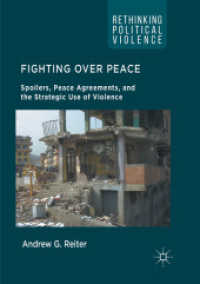- ホーム
- > 洋書
- > 英文書
- > Nature / Ecology
Full Description
This book provides comprehensive insights into the socioeconomic systems, carbon accounting, and consumption-expenditure frameworks influencing household carbon footprints (HCF) in a developing economy.








